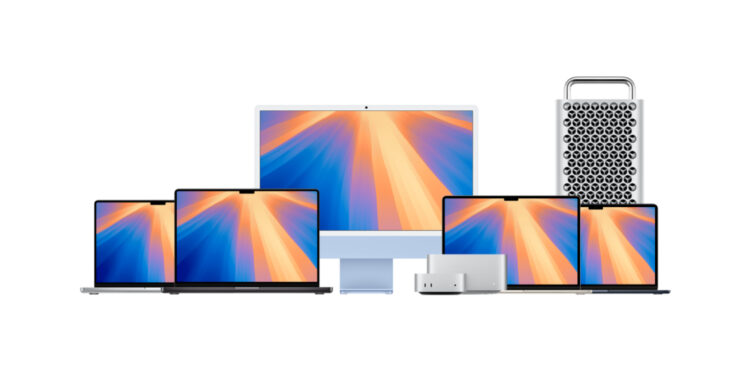When buying a new Mac, the question often arises: How much RAM do I really need? Since the introduction of Apple Silicon and the innovative Unified Memory Architecture (UMA), the traditional view of RAM and its importance in daily workflow has changed dramatically. The UMA allows all of a Mac's processing units to access a common pool of memory. But what does that mean for you and your next Mac purchase? This guide will help you choose the right memory option that meets both your budget and your work needs.
With the introduction of Apple Silicon in 2020, Apple turned the traditional concept of RAM on its head. While traditional computers use separate memory pools for the CPU and GPU, Apple Silicon technology relies on a unified, shared memory. This not only leads to greater efficiency and speed but also reduces energy consumption. This means that for many users, the need for large amounts of RAM is lower than with older Mac models with Intel processors. But how much RAM is really necessary?
16 GB: For everyday use and basic workflows
If you use your Mac primarily for everyday tasks such as browsing, streaming, office applications, and occasional multitasking, 16 GB of RAM is the right choice for you. The combination of Apple Silicon and macOS ensures that this basic configuration can also handle more demanding tasks. For students and professionals who mainly use productivity applications, this is also a cost-effective choice that covers their needs.
24 GB: For moderate multitasking and creative work
If you occasionally do video editing, graphic design or programming in addition to the basic applications, it is recommended to upgrade to 24 GB RAM. This configuration gives you the opportunity to use several demanding applications at the same time without your system stalling. Especially for users who occasionally use more complex apps or games, this represents an additional buffer that ensures smooth work.
32 GB or 36 GB: For professionals with creative workflows
Professionals who regularly use memory-intensive applications such as Adobe Creative Cloud, Xcode, or virtual machines should go for 32 or 36 GB. This amount of RAM is ideal for 4K video editing, multi-track music production, or complex software development. This configuration minimizes the need for so-called "disk swapping" (swapping to the SSD), which keeps your Mac's performance consistently high.
64 GB: For intensive creative projects and multitasking
Power users and creative minds who work with high-resolution media and multitask heavily will benefit from 64GB of RAM. This is the ideal configuration for projects such as 3D modeling, 8K video editing, and demanding simulations. This RAM range will support you when dealing with large files and complex workflows without sacrificing your Mac's performance.
96 GB: For high-end creative and developer projects
If you work with particularly large data sets or demanding media, 96 GB of RAM is worth considering. This configuration is designed for high-end professional users who work with huge projects such as 3D renderings or complex data analysis. Especially for intensive applications that require editing multiple high-resolution video or 3D files, this amount of RAM offers you exceptionally stable performance.
128 GB: For specialized professionals with extreme requirements
For specialized work areas such as film editing, scientific simulations or complex data analysis, a 128 GB configuration is advisable. If you regularly process extremely large amounts of data and require visualizations or simulations with high computing power, you can benefit from this storage capacity. It is particularly designed for demanding scientific calculations and advanced software development environments.
192 GB: For mission-critical applications and machine learning
This RAM capacity is intended for companies, researchers and developers in areas such as artificial intelligence or machine learning. With 192 GB of RAM, you can efficiently process large data sets and perform complex tests on a single computer. This configuration is optimal if you run applications with critical performance and memory requirements.
Apple Silicon and Unified Memory: Do you need more than 16 GB?
Apple Silicon's Unified Memory Architecture allows more performance to be achieved with smaller amounts of RAM than is usual in traditional systems. The base configuration of 16 GB is more than sufficient for most users and offers excellent value for money. However, if you are pursuing intensive creative or data-intensive projects, an upgrade makes sense to maximize the performance and lifespan of your Mac. When deciding on a RAM configuration, consider not only your current workload but also your expected future needs. Apple Silicon Macs do not allow for subsequent hardware upgrades, so it is important to plan your investment for the long term. Are you looking for new accessories? Visit our Amazon Storefront – there you will find a variety of products from leading providers, including for HomeKit and more! (Image: Apple)
- Mac tip: Keep things organized and clear with Mission Control
- Editing PDFs on Mac: The best tools and apps
- Optimize macOS storage – install apps on external SSD





